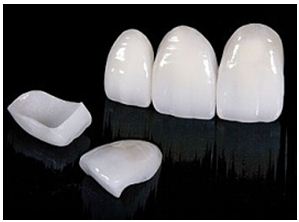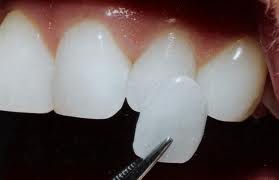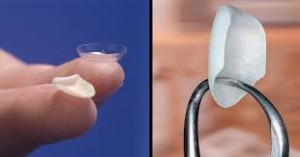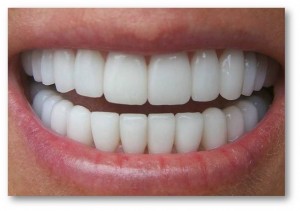Which is better - veneers or lumineers?

Veneers or lumineers are the most modern, safe and effective solution for whitening and tooth restoration.
These are irreplaceable assistants to dentists in creating a beautiful smile for many years.
With the help of veneers and lumineers, several problems of aesthetic nature can be solved simultaneously, because they serve as a kind of shutter that can hide various tooth defects.
Veneers have long been used in dentistry to create a "Hollywood smile."
Most dentists call the installation of veneers "instant orthodontics" because for one medical appointment, the patient receives a result that is similar to the result of the long work of the orthodontist doctor.
Veneers and lumineers look like thin elegant plates and are made of porcelain or zirconium dioxide.
They are used for facing the visible area of the tooth in the presence of minor defects on it.
Indications

- Alignment of the color of teeth in the presence of dark spots on the enamel.
- Darkening of tooth enamel.
- Fluorosis
- Tetracycline teeth.
- Increased tooth abrasion.
- Hiding teeth chips and bumps on their surface.
- Increased interdental spaces.
- Restoration of underdeveloped teeth and age-related changes.
- Crowding or tooth displacement.
It should be borne in mind that with the help of veneers and lumineers it is impossible to hide very strong tooth defects.
Veneers and lumineers can also be installed without medical indications - for teeth whitening. Their installation is possible only if there is no caries on the teeth.
Advantages and disadvantages
The advantages of the plates are that they:

- They allow you to hide visible tooth defects without injuring them (for example, if you need to hide the gap between the teeth).
- The material used for the manufacture of linings is not exposed to external influences.
- There is no discoloration of veneers and lumineers as a result of their operation.
- The color of the plates is selected in accordance with the shade of natural teeth.
- Installing lumineers and veneers is completely painless.
Any strong mechanical impact on the tooth pad may cause it to peel off from the tooth surface or damage it.
Therefore, one of the disadvantages of such plates is their increased fragility.
Contraindications
- The presence of caries on the teeth.
- Thin tooth enamel is a contraindication for installing veneers.
Installation of veneers and lumineers has no age restrictions.
What is the difference between veneers and lumineers

- The main difference is the thickness of the tooth pads. Lumineers are thinner compared to veneers.
- The second difference follows from the first and lies in the features of the installation. Veneers have to be placed on sharpened teeth so that after installation they do not seem larger.The thickness of the grinding of the tooth is equal to the thickness of the vinyl plate. Then the doctor takes a mold from the tooth to make a veneer. Lumineers, in comparison with veneers, are thinner and are mounted on the teeth without their preliminary grinding. The impression is made directly from the tooth.
- Lumineers, unlike veneers, are more practical and durable, because they are more tightly attached to the tooth surface, which prevents pieces of food from falling under them.
- Veneers and lumineers allow you to create the effect of a beautiful and natural smile, but lumineers can make your teeth brighter.
- The installation of luminaire pads will require no more than two visits to the dentist, and much more veneers.
Veneers and lumineers: differences
| Veneers | Lumineers | |
| Plate thickness | 0.5 - 0.7 mm | 0.3 mm |
| Installation Features | Require teeth turning | No teeth turning |
| Life time | 10 years | 20 years |
| Effect after installation | Natural natural smile | "Hollywood smile" |
| Number of doctor visits | Repeatedly | Two are enough |
| Price | Expensive | Several times more expensive |
Video: “Real American Lumineers”
What is better veneers or lumineers
Despite the fact that at first glance veneers have some drawbacks, they are not so bad.
- Such designs are the perfect combination of price and quality.
- The pain experienced during tooth turning is comparable to conventional dental treatment.
All of the above differences indicate that veneers are inferior to lumineers, but they can fully suit patients who do not need a Hollywood smile, and the cost of veneers speaks in their favor.
Lumineers are a more modern and expensive modification of veneers.
But is installing lumineers an ideal option?
Disadvantages of lumineers:

- The jaw of patients who have lumineers installed seems to be much more massive.
- It is not always possible to fit the plate along the edge of the gums, which in the future can lead to bleeding and inflammation of the gums. In this case, it may be necessary to cut them, which is quite expensive, given their cost.
- A significant minus is a high risk of fraud. Lumineers are not made in Russia, but ordered in America, so they are quite expensive.
Advice that it is better to choose veneers or lumineers for a patient can be given only by a specialist.
Only a thorough examination by the dentist can give him reason to recommend one or another method of prosthetics. A good specialist, after examining the patient, will simulate the result that will be obtained as a result of the treatment. In this situation, there is no definite answer: which is better - veneers or lumineers. First of all, it is worth weighing the pros and cons and only then make the right choice.
Life time
Depends on the quality of the material of which the plate is made, as well as on the quality of the installation.
- Veneers made of ceramics serve more than 10 years. Indication for replacement - the development of secondary caries and the destruction of dental cement, with which the veneer is attached to the tooth.
- Lumineers can last 20 years or more. When installing them, glue is used that does not dissolve in saliva or other liquids.